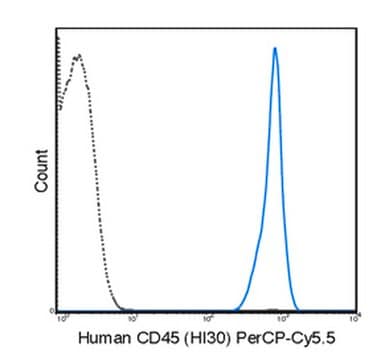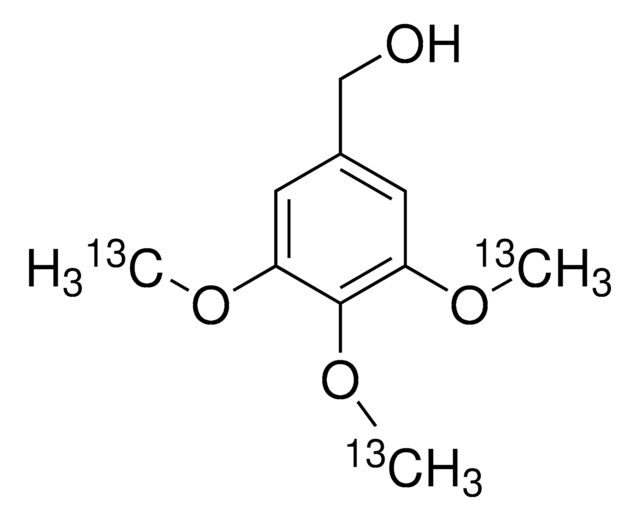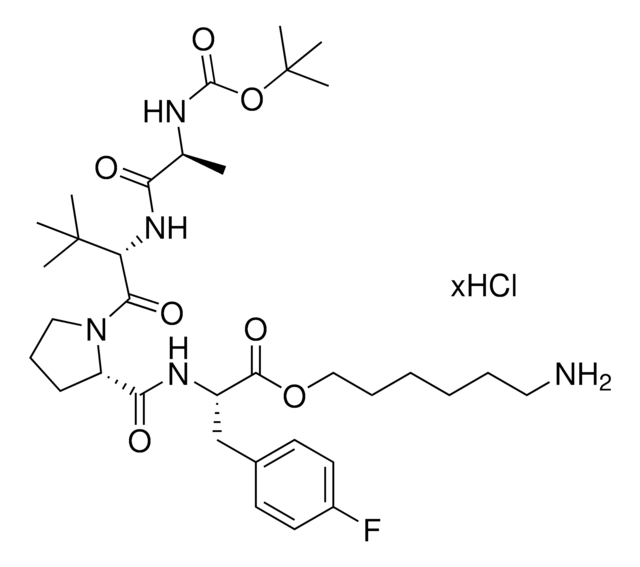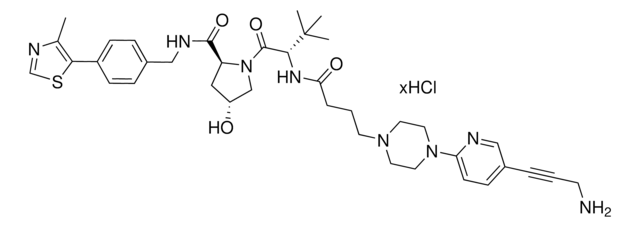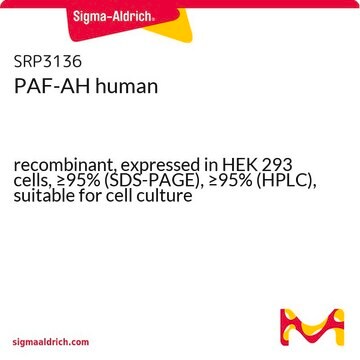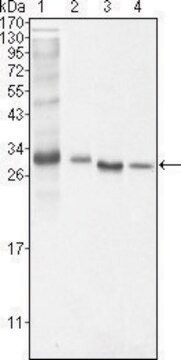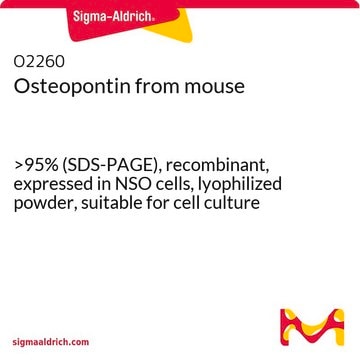916536
Pomalidomide-piperazine-pyridine-alkyne-NH2 hydrochloride
別名:
4-(4-(5-(3-Aminoprop-1-yn-1-yl)pyridin-2-yl)piperazin-1-yl)-N-(2-(2,6-dioxopiperidin-3-yl)-1,3-dioxoisoindolin-4-yl)butanamide hydrochloride, Crosslinker−E3 Ligase ligand conjugate, Pomalidomide conjugate, Protein degrader building block for PROTAC® research, Template for synthesis of targeted protein degrader
About This Item
おすすめの製品
ligand
pomalidomide
形状
powder
反応適合性
reactivity: carboxyl reactive
reagent type: ligand-linker conjugate
官能基
amine
保管温度
2-8°C
SMILES記法
O=C(N(C1CCC(NC1=O)=O)C2=O)C3=C2C=CC=C3NC(CCCN4CCN(C5=CC=C(C#CCN)C=N5)CC4)=O.Cl
アプリケーション
その他情報
Portal: Building PROTAC® Degraders for Targeted Protein Degradation
Targeted Protein Degradation by Small Molecules
Small-Molecule PROTACS: New Approaches to Protein Degradation
Targeted Protein Degradation: from Chemical Biology to Drug Discovery
法的情報
関連製品
保管分類コード
11 - Combustible Solids
WGK
WGK 3
適用法令
試験研究用途を考慮した関連法令を主に挙げております。化学物質以外については、一部の情報のみ提供しています。 製品を安全かつ合法的に使用することは、使用者の義務です。最新情報により修正される場合があります。WEBの反映には時間を要することがあるため、適宜SDSをご参照ください。
Jan Code
916536-50MG:
916536-VAR:
916536-BULK:
試験成績書(COA)
製品のロット番号・バッチ番号を入力して、試験成績書(COA) を検索できます。ロット番号・バッチ番号は、製品ラベルに「Lot」または「Batch」に続いて記載されています。
資料
タンパク質分解誘導化合物ビルディングブロックは、標的リガンドと共有結合するペンダント基を持つクロスリンカー-E3リガンド複合体です。
Protein Degrader Building Blocks are a collection of crosslinker-E3 ligand conjugates with a pendant functional group for covalent linkage to a target ligand.
ライフサイエンス、有機合成、材料科学、クロマトグラフィー、分析など、あらゆる分野の研究に経験のあるメンバーがおります。.
製品に関するお問い合わせはこちら(テクニカルサービス)